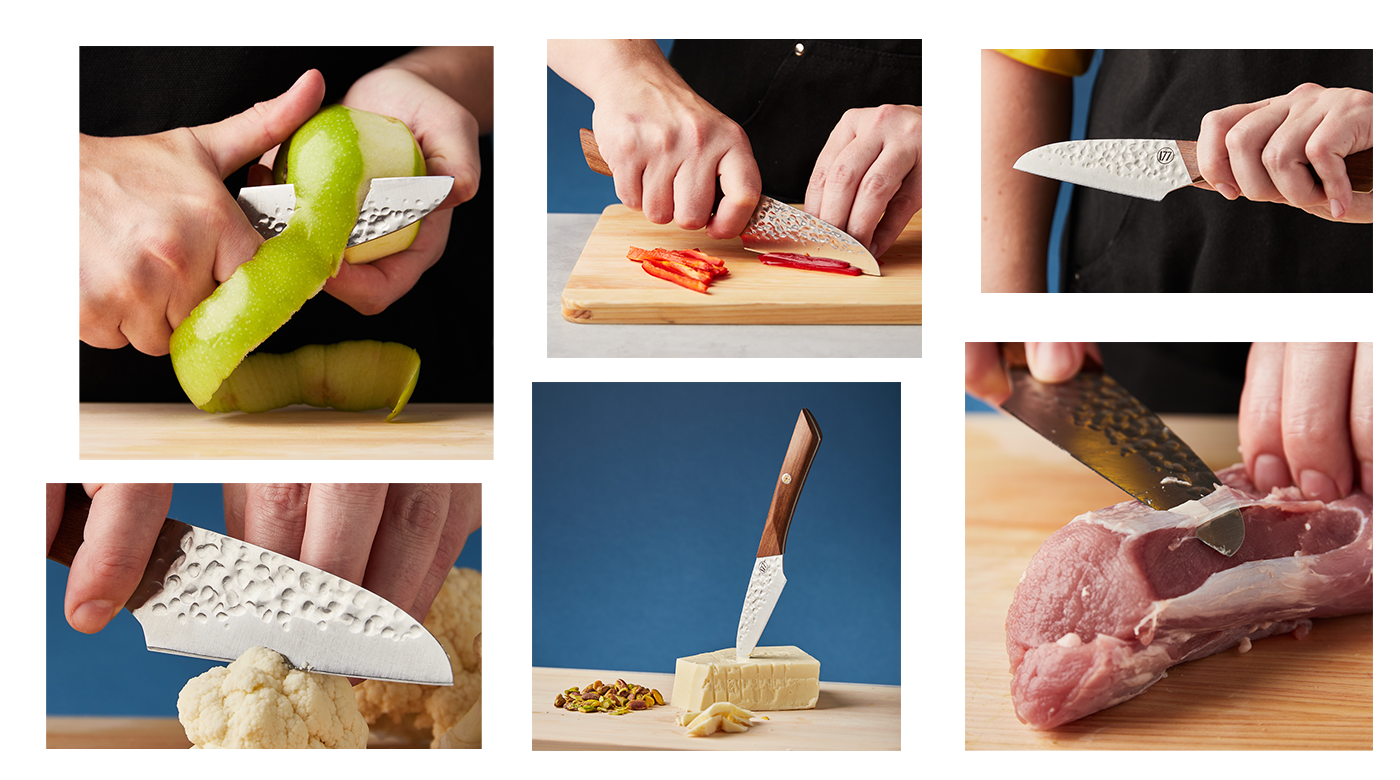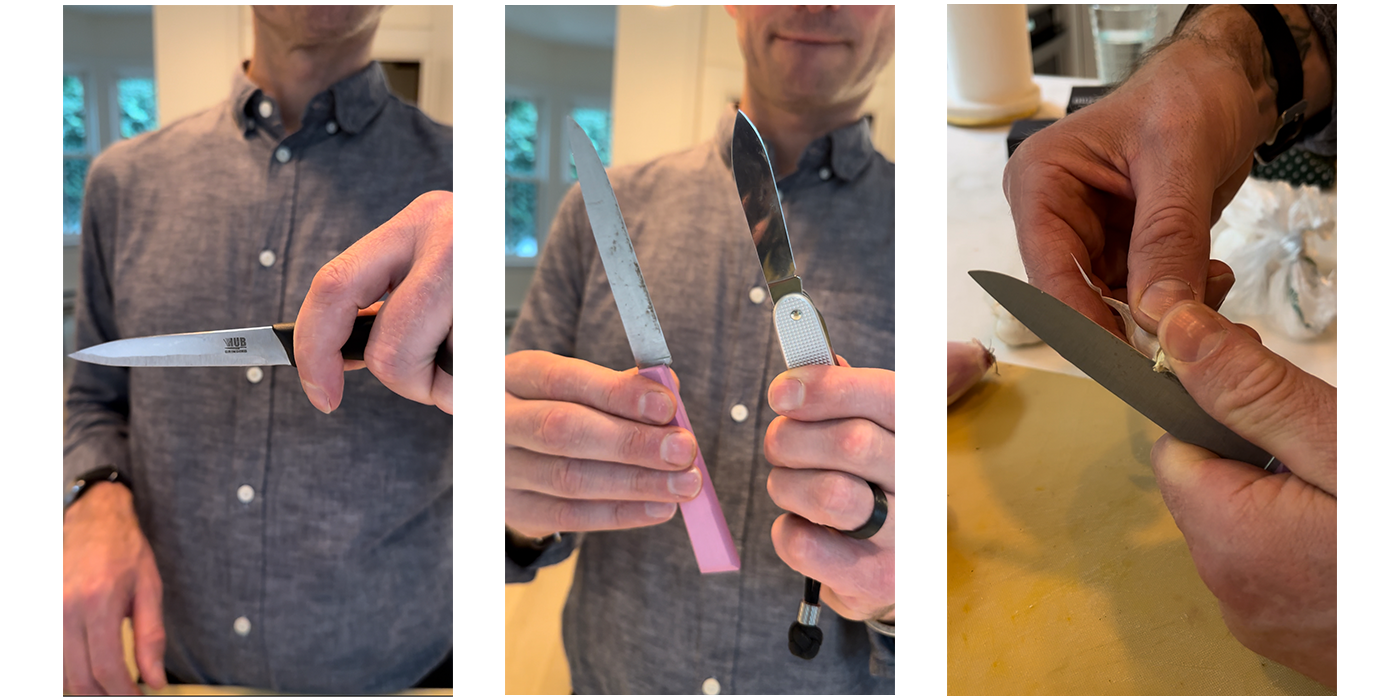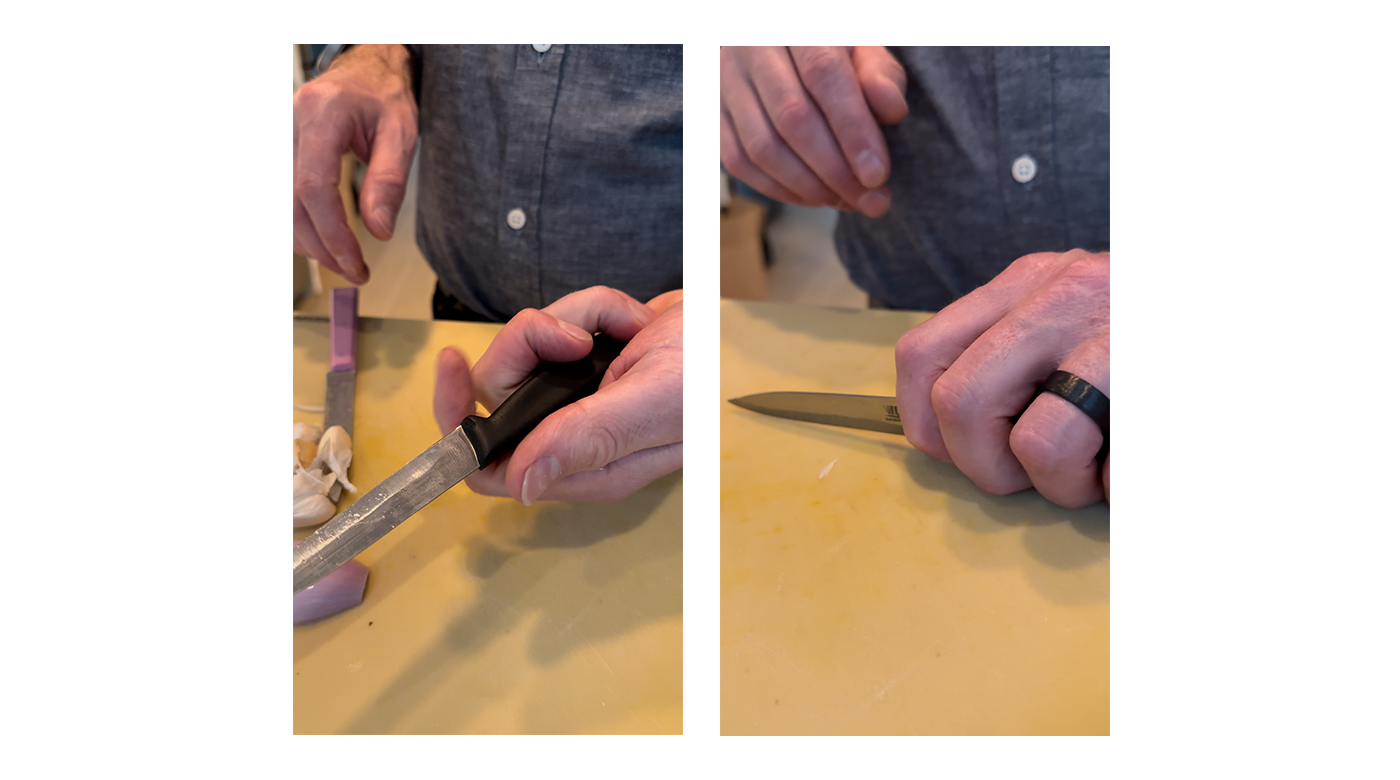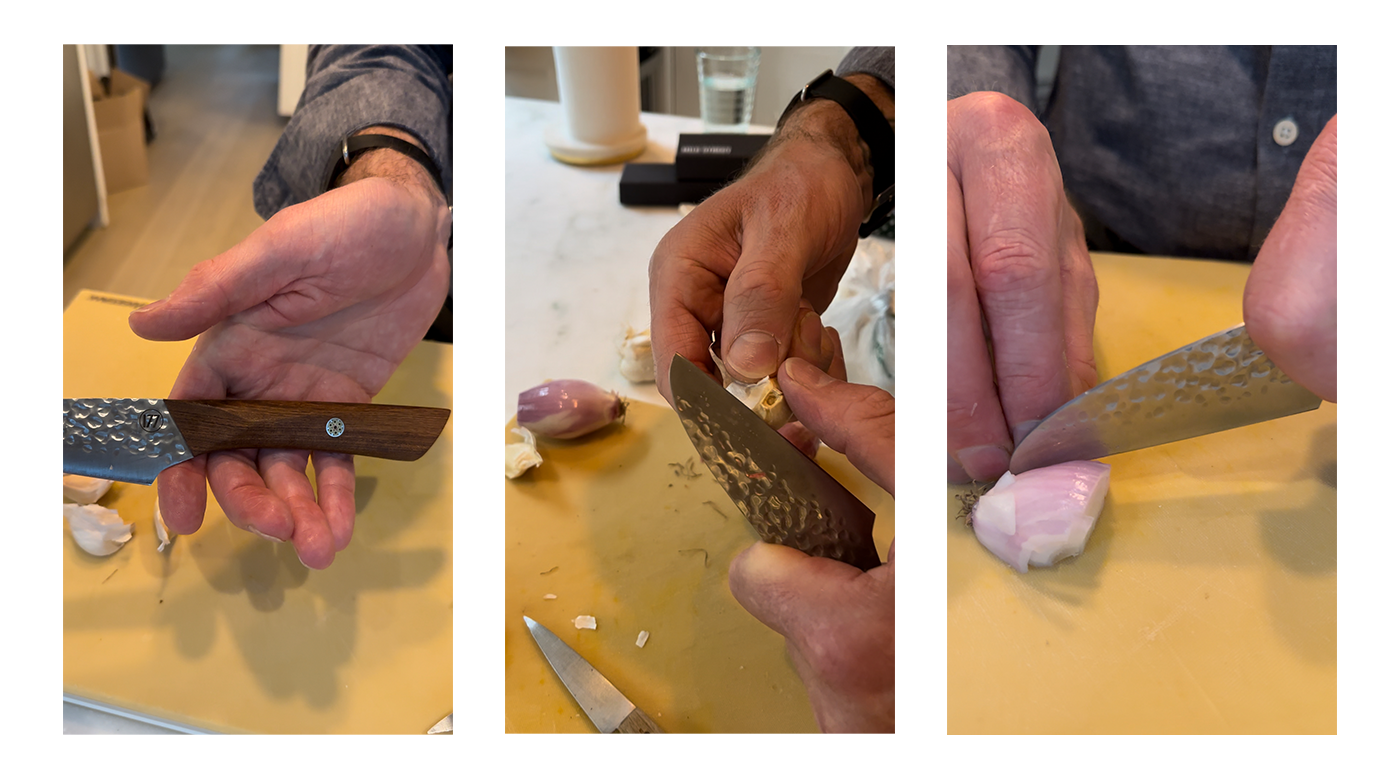

Paring knives suck. I regret to inform you that even the highest-quality paring knife sucks—because it is still a paring knife. It is not a tool designed for cooking. Here’s why.
The blade is often flimsy and flexible, which is a non-starter. But even in the best case scenario, the sturdiest paring knife might as well be a Swiss Army knife—same blades. Most paring knives have a drop point blade, meaning that the top of the blade slopes slightly downward, and the bottom of the blade swoops up to meet at the tip. If you’re peeling a clove of garlic, it’s hard to understand where the tip of the knife is, and you’re only using the flat portion of the blade. This shape is designed for whittling, cutting twine and opening boxes. It is not suited for peeling garlic or butchering a chicken.

The handle is just as dreadful: thin and narrow, prone to twisting, turning, and bucking, made for a toddler-sized palm and strength. When chopping straight down, the thinness of both blade and handle do not give adult-sized knuckles clearance above the cutting board, so dicing a shallot means repeatedly subjecting your knuckles to abuse.

This is why we ditched paring knives altogether and designed our own Kitchin-Kiji, with all of the features we desire. We gave our knife a sensibly sturdy, flat blade which doesn’t arc upwards and away from you. You know where the blade is at all times. This enables precision for fine detail work, plus the heft for rock chopping, since it chops down squarely and firmly on the cutting board. Try chopping straight down with a drop-point blade. (See above.) Awkward. Ridiculous.

We added a bigger, chunkier handle designed for an adult hand. A sturdy grip on a smaller knife is even more important than a sturdy handle on a chef’s knife—your control point, when holding a chef's knife, is the base of the blade, pinched between thumb and forefinger (the "pinch grip"). When trimming or peeling, on the other hand, your control comes from balance between clasping the paring knife handle with four fingers and using the thumb to stabilize the garlic clove or fruit or shallot. If your handle doesn't fit snugly in your grasp, you lose control of your knife.
I don’t buy the argument to buy cheap, effectively disposable paring knives—get the right tools for the job.
For more of Matt’s knife tips, read how to dice an onion like a pro (game-changing), why you need a carrot strategy, find out whether your cutting board is killing your knives, and watch him cut the finest, feather-iest scallions on Instagram.
Join the conversation on Facebook, Twitter, Instagram, TikTok and Pinterest.
And if you're looking for more Milk Street, check out our livestream cooking classes with our favorite chefs, home cooks and friends for global recipes, cooking methods and more.








